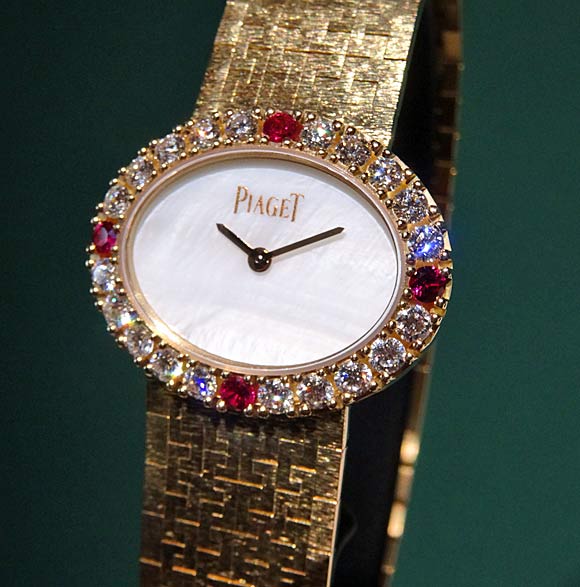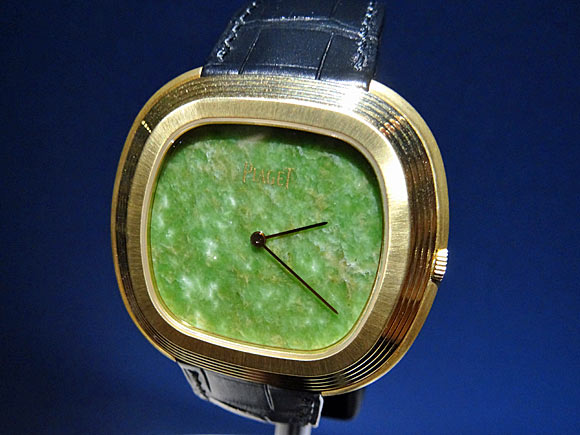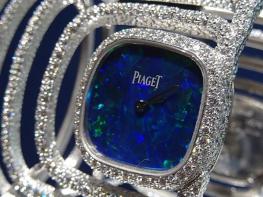Just one day: that was the amount of time allotted in Paris last week to cover Piaget’s entire watch-jewellery collection, created on the occasion of the upcoming Biennale in the City of Lights.
The new collection entitled “Extremely Piaget” is remarkable in more ways than one. The first is that it commemorates the 140th anniversary of the company (1874 – 2014). The second is that it comprises a certain number of masculine timepieces, a noteworthy exception for an event which is in principle entirely devoted to jewellery. The third and final outstanding feature lies in the exceptional wealth of Piaget’s style which for the first time revisits its golden age – the 1960s and 1970s.
“Yes, there truly was a quite unique creative explosion during those years,” confirms Philippe Léopold-Metzger, Piaget’s CEO. “And what is even more surprising is that Piaget managed to harness this creative impetus thanks to the talent of artisans who, for the most part, have never left la Côte-aux-Fées!”

Daring stones
Today, Piaget reinterprets the creations it produced during its golden age through 124 creations, including some 40 timepieces. These families are organised around two powerful values – namely colour and hard stones.
“Our mastery of ultra-thin horology enabled us from the 1950s onwards to make such use of stone, notably on watch dials,” continues Philippe Léopold-Metzger. “A wind of freedom and Dolce Vita was blowing through the design world at the time, and there was a unique creative energy”.
These hard stones are once again in the spotlight in 2014. Turquoise, lapis lazuli, opal, onyx, jade: all are now reworked in creations that revive the creative spirit of the 1960s and 1970s, without ever being mere replicas. The Biennale collection is organised around two universes – “Extremely Colourful” and “Extremely Sparkling”, which, as their name indicates, make liberal use of coloured hard and precious stones alike, while giving predominance to diamonds.
“We were the first to adopt a new way of wearing time, for example, with cuff watches"
“What we found interesting here, is Piaget’s daring back in the day,” continues Philippe Léopold-Metzger. “We were the first to adopt a new way of wearing time, for example, with cuff watches, a creation that was characteristic of the company.”
Today, not only is Piaget reinterpreting wristwatches that are every bit as creative, including such liberally gem-set cuff watches, but it is also going a step further with cuff watches featuring a double movement or long sautoir-type necklaces which favour oval shapes. Even a rare sautoir model worn like a tie makes an appearance.

Andy Warhol’s return to favour
On the watchmaking front, Piaget takes advantage of the opportunity presented by the Biennale to produce a remake of Andy Warhol’s 1973 timepiece, a masterful work endowed with an identity every bit as powerful as its owner. The 2014 reinterpretation reprises the key characteristics and only the original Bêta 21 movement has been replaced with an in-house automatic calibre (cal. 504D). The shape of the case is slimmer but retains its alternating highly characteristic sculptured matt and shiny gold surfaces, enhancing its contrast with the dials which come in jade, lapis lazuli and opaque ruby (three 18-piece series).

Finally, the Altiplano is not to be outdone, appearing with new gem-set and skeleton finishes. Three stones have been selected to adorn the company bestseller – ruby, sapphire and black diamond. It is principally the bezel that is sporting new colours here, as part of a numbered but not limited series.
Future prospects
These diverse watch-jewellery creations brilliantly highlight Piaget’s inherent creativity, both of yesteryear and today. But what about tomorrow? According to Philippe Léopold-Metzger, “Yes, the world of jewellery and watchmaking might one day once again experience the creative power of this era. However, it would need to gain an audience and getting men to accept hard stones is a very different battle.”
"Hedonism is a characteristically Piaget art of living"
The allusion to Andy Warhol – targeting aesthetes with distinctive tastes – is thinly veiled. But the CEO, over and above the distinction between men and women, between young consumers or experienced connoisseurs, prefers to position the debate in the realm of the brand philosophy: “I think that these creations would appeal to a broad hedonistic audience. Hedonism is a characteristically Piaget art of living. We are sculptors of gold and we work on exclusive creations which always find their audience.”






